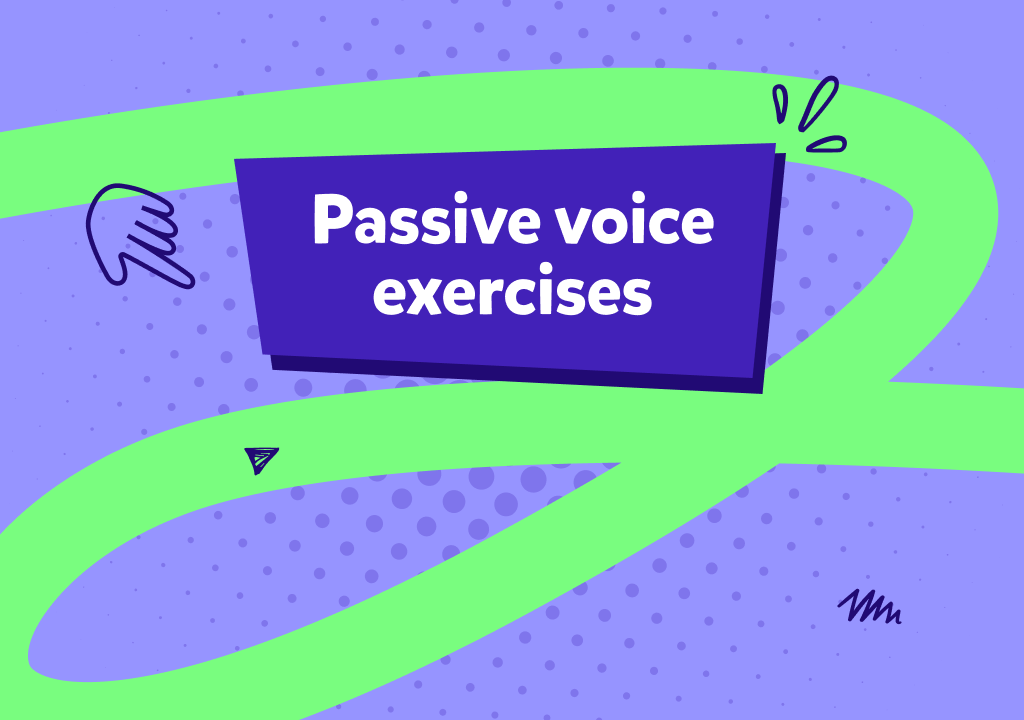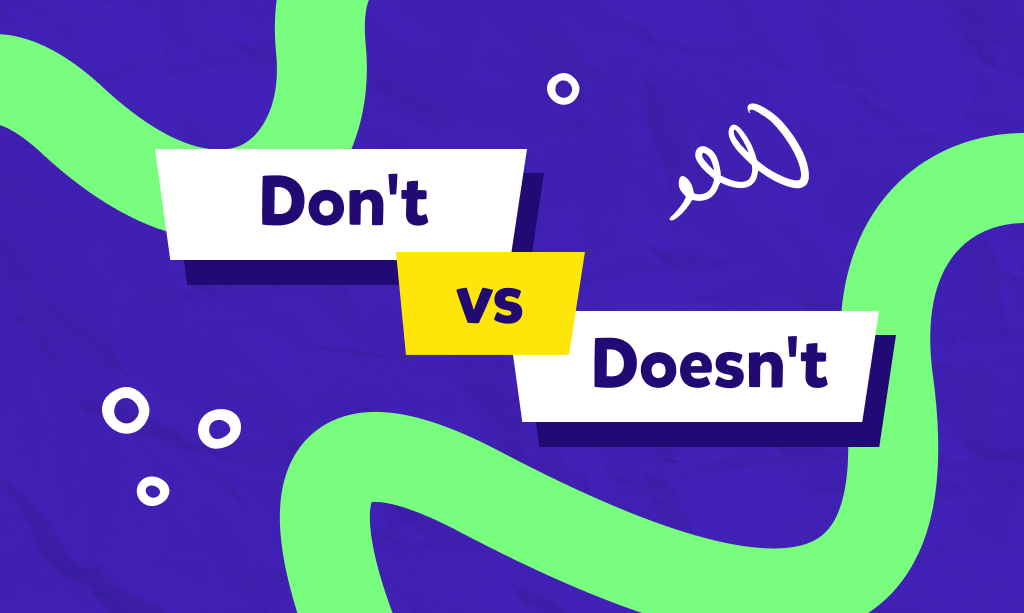- Passive Voice praktyczne zadania do rozwiązywania
- Ćwiczenia "uzupełnij lukę" (fill the gap)
- Ćwiczenia "przekształć zdanie na stronę bierną"
- Ćwiczenia "wybierz poprawną odpowiedź"
Passive Voice to konstrukcja gramatyczna, która zarówno w języku polskim, jak i języku angielskim służy do opisywania sytuacji, w których nacisk kładzie się na samą czynność lub jej skutek, a nie na osobę wykonującą daną akcję. Strony biernej używamy, gdy osoba lub rzecz, na której dokonuje się czynność, jest ważniejsza od sprawcy tej czynności, lub gdy sprawca nie jest znany lub istotny.
Na przykład, gdy chcesz powiedzieć, że list został dostarczony, ale nie ma potrzeby podkreślania, kto go dostarczył – używasz wtedy Passive Voice.
Aby dobrze opanować mowę bierną w języku angielskim, niezbędna jest praktyka – dlatego przygotowaliśmy dla Was zestaw interaktywnych testów online, które pomogą Wam utrwalić użycie tej struktury w różnych kontekstach i sprawdzić swoją wiedzę!
Passive Voice praktyczne zadania do rozwiązywania
Sprawdź swoją znajomość strony biernej z naszymi praktycznymi ćwiczeniami! Znajdziesz tu różnorodne zadania: od wypełniania luk w zdaniach, przez testy wielokrotnego wyboru, aż po przekształcanie zdań. Te różnorodne zadania pomogą Ci lepiej zrozumieć Passive Voice, abyś mógł ich swobodnie używać w codziennej komunikacji.
Ćwiczenia "uzupełnij lukę" (fill the gap)
- Zdania proste:
Zdania proste w stronie biernej to doskonałe narzędzie do skupienia uwagi na zdarzeniach lub rezultatach, omijając informacje o ich sprawcach. Z poniższymi zadaniami przećwiczysz podstawy passive voice w różnych czasach gramatycznych, co jest niezbędne zarówno w komunikacji formalnej, jak i przygotowaniach do międzynarodowych egzaminów z języka angielskiego.
English ___ (speak) in many countries. 
is spoken
The car ___ (steal) last night. 
was stolen
A new supermarket ___ (build) in our neighborhood. 
is being built
The documents ___ (send) by email as we speak. 
are being sent
The song ___ (play) on the radio frequently. 
is being played
All the cookies ___ (eat) by the time we arrived. 
had been eaten
The movie ___ (show) in cinemas next month. 
will be shown
This book ___ (write) by a well-known author. 
is written
The project ___ (complete) by the team before the deadline. 
had been completed
The flowers ___ (water) every morning. 
are watered
- Zdania z przyimkami:
Zdania w stronie biernej z przyimkami pozwalają precyzyjnie wskazać na sprawców, narzędzia czy okoliczności zdarzeń. Używając różnych przyimków, jak „by” dla sprawcy, „with” dla narzędzia, czy „in” dla okoliczności, możemy dostarczyć więcej szczegółów, nie tracąc na klarowności przekazu. Dzięki poniższym przykładom przećwiczysz sobie różne warianty zdań i nauczysz się poprawnie stosować te konstrukcje.
The novel was written ___ a famous author. 
by
The cake was cut ___ a sharp knife. 
with
The agreement was signed ___ all parties involved. 
in
The painting was completed ___ the artist last month. 
by
The documents were destroyed ___ fire. 
with
The decision was made ___ a moment of haste. 
in
The message was sent ___ an encrypted email. 
with
The speech was given ___ the CEO at the annual meeting. 
by
The photograph was taken ___ a professional camera. 
with
The lecture was conducted ___ an experienced professor. 
by
- Zdania z czasownikami modalnymi:
Ćwiczenia z zastosowaniem czasowników modalnych w stronie biernej są kluczowe, aby nauczyć się wyrażać konieczność, możliwości, lub zdolności w sposób formalny lub stanowczy. Sprawdź, jak poradzisz sobie z tymi przykładami!
The report must ___ (write) before the end of the day. 
be written
This software can ___ (install) on multiple devices. 
be installed
All entries should ___ (submit) by next Monday. 
be submitted
The documents might ___ (send) by courier. 
be sent
The new rules could ___ (introduce) as early as next week. 
be introduced
The project will ___ (complete) by the end of this quarter. 
be completed
The building must ___ (evacuate) immediately. 
be evacuated
The issue may ___ (resolve) without further discussion. 
be resolved
The car cannot ___ (repair) until next week. 
be repaired
The proposal should ___ (review) by all members before approval. 
be reviewed
Ćwiczenia "przekształć zdanie na stronę bierną"
- Zdania czynne na bierne:
Wykonując przekształcanie zdań, nauczysz się skupiać uwagę na działaniu lub jego efekcie, a nie na podmiocie wykonującym czynność. Zwróć uwagę na czas, w którym jest stworzone zdanie w stronie czynnej i spróbuj je prawidłowo przekształcić.
- The chef prepares the meal. -> The meal ___ by the chef.
- The teacher is explaining the lesson. -> The lesson ___ by the teacher.
- The company will launch a new product. -> A new product ___ by the company.
- The gardener planted the flowers yesterday. -> The flowers ___ by the gardener yesterday.
- The workers are repairing the road. -> The road ___ by the workers.
- The scientist discovered a new element. -> A new element ___ by the scientist.
- The team had completed the project. -> The project ___ by the team.
- The artist will paint a new mural. -> A new mural ___ by the artist.
- The secretary had typed the document. -> The document ___ by the secretary.
- The manager is overseeing the work. -> The work ___ by the manager.
- Zdania z różnymi czasami:
Przekształcanie zdań z formy czynnej na bierną w różnych czasach gramatycznych to doskonałe ćwiczenie, które pozwoli Ci nie tylko zrozumieć mechanizmy tworzenia strony biernej, ale także ugruntować znajomość różnych czasów angielskich. W tej sekcji będziemy pracować nad zdaniem z użyciem różnych form czasowych — od przeszłości przez teraźniejszość aż po przyszłość.
- She writes an email. -> An email ___ by her.
- He is painting a mural. -> A mural ___ by him.
- They built the bridge last year. -> The bridge ___ by them last year.
- We have discovered a new species. -> A new species ___ by us.
- She was singing a beautiful song. -> A beautiful song ___ by her.
- They will deliver the package tomorrow. -> The package ___ by them tomorrow.
- The chef had prepared the meal. -> The meal ___ by the chef.
- You are completing the form. -> The form ___ by you.
- They had been planning the event for months. -> The event ___ by them for months.
- She will have finished the report by tomorrow. -> The report ___ by her by tomorrow.
Odpowiedzi 
- An email is written by her.
- A mural is being painted by him.
- The bridge was built by them last year.
- A new species has been discovered by us.
- A beautiful song was being sung by her.
- The package will be delivered by them tomorrow.
- The meal had been prepared by the chef.
- The form is being completed by you.
- The event had been planned by them for months.
- The report will have been finished by her by tomorrow.
Ćwiczenia "wybierz poprawną odpowiedź"
- Wybór odpowiedniej formy czasownika:
Dzięki poniższym ćwiczeniom utrwalisz sobie prawidłową budowę zdań z użyciem Passive Voice, tym samym przypominając sobie struktury większości czasów w gramatyce angielskiej!
The letter was sent / sent yesterday. 
was sent
The house is being built / is built now. 
is being built
The song was sung / sung by the choir. 
was sung
The project will be finished / is finished by tomorrow. 
will be finished
The documents had been signed / were signed before the meeting. 
were signed
The windows are being cleaned / are cleaned every week. 
are being cleaned
The car had been repaired / was repaired last week. 
was repaired
The cake will be baked / is baked for the party tonight. 
will be baked
The message is being sent / is sent right now. 
is being sent
The book had been written / was written by a famous author. 
was written
- Wybór odpowiedniego zaimka:
W tej sekcji skupimy się na wyborze odpowiednich zaimków w zdaniach w stronie biernej. Ćwiczenia te pomogą Ci zrozumieć, jak używać zaimków osobowych, aby twoje zdania były gramatycznie poprawne i brzmiały naturalnie.
The presentation was prepared by (me / we). 
me
The message was sent by (her / she). 
her
The song was sung by (he / him). 
him
The project was completed by (us / we). 
us
The painting was admired by (they / them). 
them
The car was driven by (him / he). 
him
The meal was cooked by (she / her). 
her
The award was accepted by (we / us). 
us
The flowers were picked by (them / they). 
them
The book was reviewed by (me / I). 
me
Ćwiczenia strony biernej to świetna okazja, aby zweryfikować swoją znajomość czasów gramatycznych – od Past Simple, przez Future Simple aż po Present Perfect. Jeśli chcesz, aby Twoje dziecko uczyło się gramatyki i rozwijało słownictwo pod okiem wykwalifikowanych native speakerów, to zapisz je na bezpłatną lekcję próbną i zobacz, jak przyjemna może być nauka języka angielskiego!









































